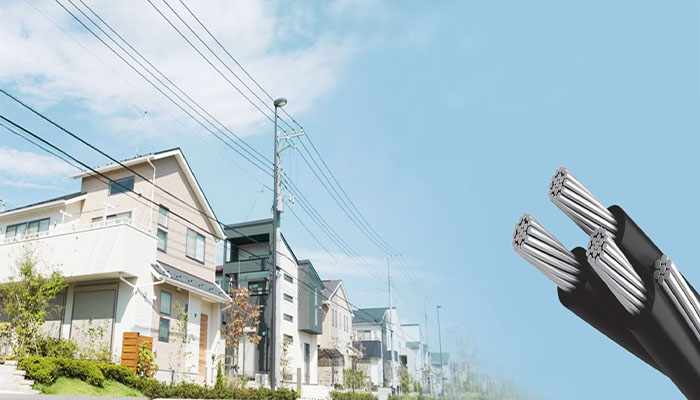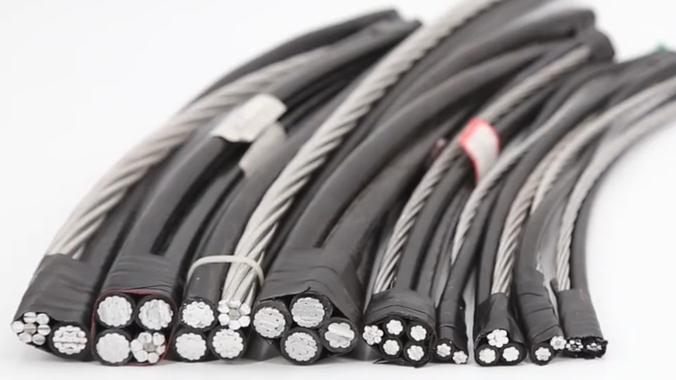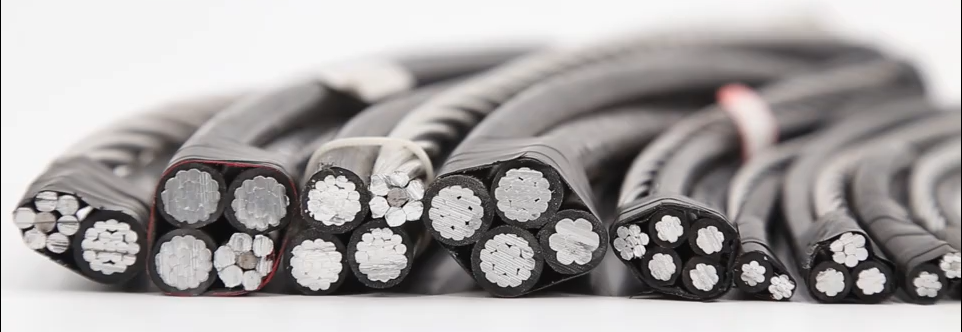- Offices Time:24 Hours Online
- Email:[email protected]
- WhatsApp:+8618339938759

Posted on April 23, 2023
What is overhead service wire?
What is overhead service wire?
Overhead service wire is a cable or set of cables that transmit electrical power from an electrical grid or distribution network to a building or residence. These wires are usually located above ground and supported by utility poles, and they can deliver power to a variety of structures, including homes, businesses, and other types of buildings.
Overhead service wires play a crucial role in delivering electricity to homes and businesses. They are the primary means of transmitting power from the utility grid to individual buildings, and they provide a reliable and efficient way to distribute electricity over long distances. Without overhead service wires, it would be difficult and costly to deliver electricity to many parts of the world.

Components of overhead service wires:
1.Conductors: These are the wires that carry the electrical current from the power lines to the building or residence. They are typically made of aluminum or copper and are insulated to prevent electrical shocks or interference.
2.Insulators: These are materials that are used to support the conductors and prevent them from coming into contact with the supporting structures, which could cause a short circuit. Insulators are typically made of porcelain, glass, or composite materials.
3.Pole or Tower: The poles or towers are used to support the conductors and keep them at a safe distance from the ground and other structures.
4.Service Drop: This is the section of wire that runs from the utility pole or transformer to the building or residence. It typically consists of three wires, two “hot” wires that carry the electrical current and one neutral wire that completes the circuit.
Types of overhead service wires:
1.Bare Overhead Conductors
These are conductors that are not insulated and are used in areas where the risk of contact with people or objects is low.
2.Covered Overhead Conductors
These are conductors that are insulated with a covering of rubber or plastic. They are used in areas where the risk of contact with people or objects is higher.
3.Duplex service wire
It consists of two aluminum conductors, each with a polyethylene insulation and a weather-resistant covering.
4.Triplex service wire
These are service drop cables that consist of three wires, two “hot” wires that carry the electrical current and one neutral wire that completes the circuit. They are typically used in residential areas.
5.Quadruplex service wire
These are service drop cables that consist of four wires, three “hot” wires that carry the electrical current and one neutral wire that completes the circuit. They are typically used in commercial areas or areas with high power requirements.

How Overhead Service Wires Work?
Connection between service wires and the utility grid:
Overhead service wires are the primary means of transmitting electrical power from the utility grid to homes and businesses. These wires are typically attached to utility poles, which are placed along the side of the road or in other designated areas. The utility grid provides power to the wires through a network of substations and transformers, which step up or step down the voltage as needed to maintain a constant flow of electricity.
To connect a building to the overhead service wires, a service drop is installed from the nearest utility pole to the building. The service drop typically consists of three wires: two hot wires, which carry the power, and one neutral wire, which provides a return path for the electricity. The wires are often wrapped in a protective coating and are connected to the building’s electrical meter.
Power transmission through overhead service wires:
Overhead service wires use alternating current (AC) to transmit power. AC current is generated by the utility grid and travels through the wires in a back-and-forth motion, switching direction at regular intervals. This oscillation of the current is what allows power to be transmitted over long distances with minimal loss.
The amount of power that can be transmitted through overhead service wires depends on several factors, including the voltage of the wires, the thickness of the wires, and the distance between the wires. Higher voltage wires can transmit more power than lower voltage wires, while thicker wires can handle more current without overheating. The distance between the wires also affects the amount of power that can be transmitted, as the electrical resistance of the wire increases with distance.

Common Issues with Overhead Service Wires:
1.Power interruptions:
One common issue with overhead service wires is power interruptions. Overhead wires are exposed to the elements and are vulnerable to damage from wind, lightning, falling trees or debris, and other environmental factors. Any damage to the overhead wires can cause power interruptions, which can be inconvenient and even dangerous for customers who rely on electricity for heating, cooling, and other essential services.
2.Safety concerns:
Overhead service wires can also pose safety concerns. These wires carry high voltage electricity and if someone accidentally comes into contact with them, it can result in serious injury or death. Additionally, overhead wires can be a hazard for first responders during emergencies, such as fires or accidents, who need to access the area but cannot do so safely due to the wires.
3.Impact of weather conditions on overhead service wires:
Weather conditions can also impact overhead service wires. For example, heavy snow or ice accumulation on wires can cause them to sag or even break. Strong winds can also cause wires to sway or come into contact with each other, leading to power outages or damage. In areas prone to hurricanes or tornadoes, the impact on overhead wires can be even more severe, with poles and wires being knocked down or damaged.
Finally,overhead service wires play a critical role in delivering electricity to our homes and businesses. Understanding how they work and the common issues associated with them is essential for anyone who relies on electricity. Whether you are a homeowner, business owner, or just someone interested in the topic, take some time to learn more about overhead service wires. By doing so, you can make informed decisions about your electricity needs and contribute to a more reliable and sustainable energy future.
Post categories
Most Popular Posts
-
The 136th Canton Fair welcomes you to participate!
October 12, 2024 -
High temperature cable introduction
July 26, 2024 -
Kenya Power and Energy Exhibition 2024
June 11, 2024 -
Introduction of rubber sheathed cable
June 5, 2024





